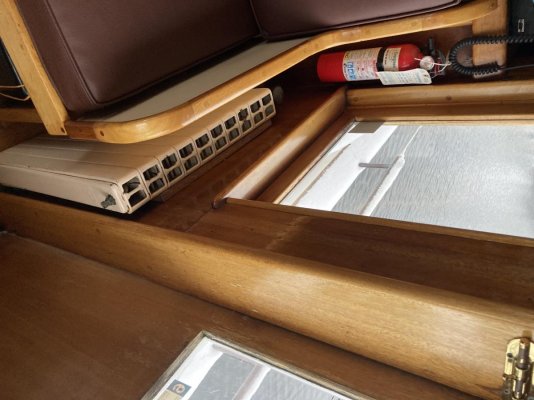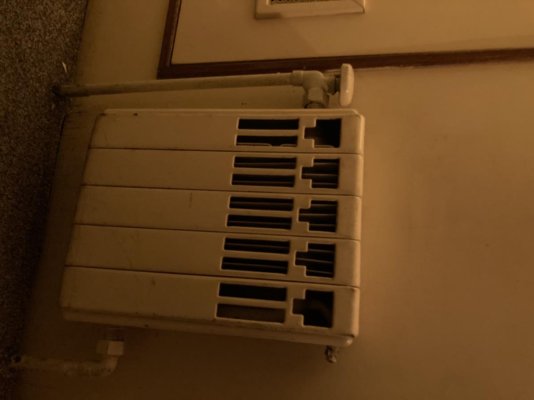Drew,
For comparison, we have a hydronic system heated by a Webasto DBW 2010, 45,000 BTUs. It’s always been plenty of heat, but we are smaller than you.
Random thoughts, some already mentioned...
The DBW 2010 boiler has been the most problematic system on the boat. Fuel leaks, coolant leaks, sooting, poor quality fuel nozzles, etc. It is installed per the Sure Marine installation manual. Service has been difficult to non-existent to obtain. I could go on for some time about the headaches. I advise against Webasto - go with ANYTHING else.
The hydronic heat itself is pleasant - all of the lines, though insulated, do lose some heat. This warms all of the areas where the lines run (read - low in the boat) which helps to keep the entire boat very evenly heated. If left on...that is, not starting with a cold-soaked boat, the system seems to run very little.
We NEED the dehumidifier with the hydronic heat. It runs at the dock and underway. If we use the reverse cycle units, moisture is kept under control.
If I were starting from scratch, I would likely use 3 separate Wallas diesel forced air units. I think this would help with humidity control, as we would bring fresh air inside the boat to replace the combustion air. One below in the cabins, one in the salon, and one small unit in the PH ducted to the windows for a demister.
We do not heat the engine or domestic water with the hydronic loop, nor do we heat the hydronic loop with the engine. The unit was installed before our time, but I have kept it this way as it eliminates a bunch of complexity and failure points.
We supplement with an electric space heater down below when on the grid, to lessen run time and associated costs with the Webasto.

 There are advantages and disadvantages to both types of heat.
There are advantages and disadvantages to both types of heat.
